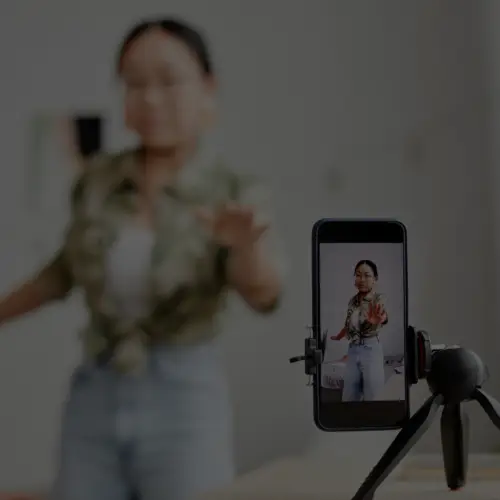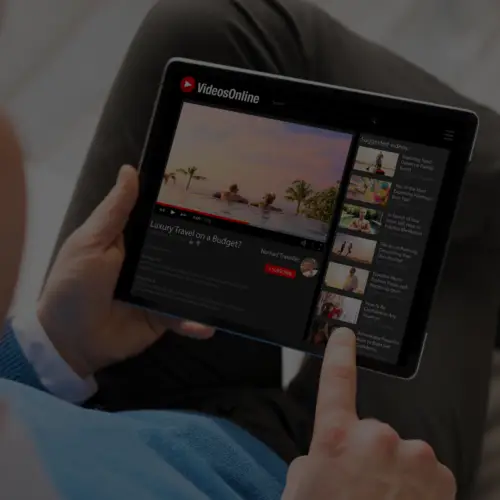23 Dec Social Media Content Optimization Survey Aims to Set Industry Benchmarks
Between the number of social networks available to brands and the many, many variations of types of content, formulating the best way to publish and promote in social media can be an onerous task. This is because there’s no one answer to how to best optimize your social media content. Figuring out a formula that will work best for your brand on your channels is possible, with some patience, hard work, and data – lots of data.
Together with Adobe, Software Advice is conducting the Social Media Content Optimization Survey that aims to identify which social content optimization tactics achieve the best results. I sat down with Ashley Verrill, content strategist for Software Advice and one of the brains behind the survey, to discuss some current best practices on social media content optimization and how she hopes the survey will impact and inform the social media marketing industry.
Let’s start with the “What’s” and “Why’s” of the Social Media Content Optimization survey:
Social media content optimization refers to customizing content for each social media network to achieve optimal results. This can include changes to the actual structure of the post (e.g. the image size, or the number of characters in the text), or the timing and frequency at which the content is published. Now that social has matured as a marketing channel and businesses are extending so many resources towards content development, marketers would be remiss if they didn’t figure out how they can maximize the value of the content using social media. It’s our hope that the survey results will provide some clarification to the industry since there are so many factors and elements at play on social.
Why is it important to optimize social media content for different social networks?
There’s a few of reasons. For one, the types of content people respond to can differ depending on the platform. In most cases, for example, photos, videos and other visual elements will be effective for drawing eyeballs, but the type of image or video that attracts clicks might vary. Another reason, of course, is that capabilities vary for each type of network. For some, you can tweak the text that auto-populates next to the link, or you can optimize the image that goes along with the post. It’s also important to consider that there might be optimization tactics that are unique to your audience.
With so many different social networks out there, how can companies decide which ones are most beneficial and relevant for their brand?
My best recommendation is trial and error and A/B testing. Regardless, I do think it’s important companies set priorities for each platform. Our content, for example, has resonated really well with LinkedIn audiences (likely because we write about business-focused topics), so we focus a lot of our efforts there. We found this data by looking at our site traffic through Google analytics. We noticed that we were driving a lot of traffic from posting links to articles in discussion groups, so we’ve added new standardized processes for sharing in these groups.
How can social media managers figure out which days are the best to post on social media?
I’ve seen reports that try to put standards by platform, but really it will likely be unique to your target audience. This is a hypothetical, but think, for example, for a B2C e-retailer, compared with a B2B marketing consultancy. The retailer might do better running campaigns late on Friday, on the weekends, or when people are looking for a distraction at work. In the latter case, the marketing company might do better during peak work productivity hours because that’s when company’s are researching key marketing services. The best tactic for finding that sweet spot, again, is trial and error, and A/B testing. Test the same campaign on several different days and see which performs the best. Don’t forget to consider the time of day that the content is published. That can also be a significant determinant of success.
Can you give us a sneak peek into current survey results?
So far the respondents have been managers or owners of smaller with a presence on four-five social channels. The respondents are seeing the greatest success in terms of building brand recognition, building thought leadership, and driving traffic to their website. The least successful of their marketing objectives is using social to drive direct response sales. Right now, the data tells us that the two most important tactics for social media content optimization is limiting the characters on posts and the use of images and photos.
The full survey results will be available in late-February or early-March on Adobe’s digital marketing blog and from Software Advice. It’s Ashley’s hope that once the data is compiled, your company will be able to use this research to make more informed decisions about the way you publish and optimize social content.
The survey is open until the end of January – take it if you have 5-10 minutes.







